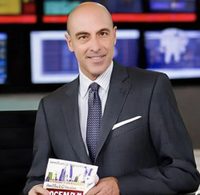The China Rainmaker’s Gambit: How Rebecca Wei’s New Firm Navigates a Fracturing Global Market

The trade war between the U.S. and China has reshaped global business landscapes, leaving even the most entrenched firms scrambling to adapt. Nowhere is this more evident than in the shifting dynamics of consulting and high-end art markets. Enter Rebecca Wei, the former McKinsey & Company “China Rainmaker” and architect of the firm’s Greater China strategy, who has pivoted to launch Wei and Associates, a Hong Kong-based art advisory firm targeting Asia’s ultra-wealthy collectors. Her move underscores a broader truth: in an era of economic fragmentation, expertise in navigating cultural and financial borders may prove as valuable as traditional corporate strategy.
The Rainmaker’s Exit
Wei’s departure from McKinsey, where she became its first female partner in Greater China, marks a strategic retreat from a sector she once dominated. McKinsey, along with rivals like Boston Consulting Group (BCG), has struggled to retain influence in China’s state-driven economy. Government entities and state-owned enterprises (SOEs) increasingly favor local consultancies aligned with Beijing’s priorities, wary of foreign firms’ perceived risks to national sovereignty. This shift is reflected in
Wei, however, has bet on a different frontier: the $65 billion global art market, where trust and cultural fluency are currencies as potent as capital. Her new firm, Wei and Associates, positions itself as a bridge between Asia’s rising collectors and the international art world. “Collectors today want more than transactions—they seek curatorial vision and discreet, localized expertise,” Wei told me. Her team includes former Christie’s executives and art-world veterans, leveraging their networks to advise on acquisitions, collection management, and even travel logistics for clients.
The Art Market’s Resilience Amid Chaos
The art market, often a bellwether for luxury spending, has faced its own turbulence. In 2024, Asian art sales fell by 17%, as wealth holders grew cautious amid geopolitical uncertainty. Yet Wei sees opportunity in the cracks. Post-sale transactions—where unsold auction lots find buyers privately—have surged, suggesting demand remains robust for those with access to curated, off-market opportunities.

Her optimism is backed by data: Art Basel and UBS’s 2024 report noted that 42% of Asian collectors plan to increase spending in 2025, driven by younger buyers seeking niche artists like Yayoi Kusama and Yoshitomo Nara. Meanwhile, reveals that while stock markets fluctuate, high-end art retains its allure as an inflation hedge and status symbol.
The Consulting-to-Art Pivot: A New Paradigm
Wei’s transition reflects a growing trend: ex-consultants and auctioneers are redefining wealth management. Patti Wong, former Sotheby’s Asia chair, launched her own advisory firm in 2023, while McKinsey alumnus Alibek Dostiyarov is automating consulting workflows via his AI startup Perceptis. These moves signal a shift toward niche, relationship-driven services—a response to clients’ wariness of “one-size-fits-all” solutions.
For investors, the lesson is clear: In a fragmented world, firms that blend deep cultural understanding with specialized expertise will thrive. Wei’s firm exemplifies this, capitalizing on McKinsey’s strategic rigor and her own decades of China market insights.
Conclusion: Betting on Trust in a Distrusting Era
As trade barriers harden and wealth migrates to Asia, Rebecca Wei’s gamble is a masterclass in reinvention. Her success hinges not just on art’s enduring appeal, but on the irreplaceable value of trust. With Asian collectors controlling over 35% of global art spending, Wei and Associates is positioned to capitalize on a market where personal connections and localized knowledge are scarce, yet invaluable.
The numbers tell the story: Despite 2024’s dip, Asian art sales still exceeded $23 billion, and private advisory fees have grown at a 12% annual clip since 2020. For those willing to look beyond traditional sectors, the next “China Rainmaker” might not be in boardrooms—or even in China—but in the gilded galleries where culture, capital, and strategy converge.



_442a2dcc1749832873286.jpeg)
_e68fac6d1749831664430.jpeg)






